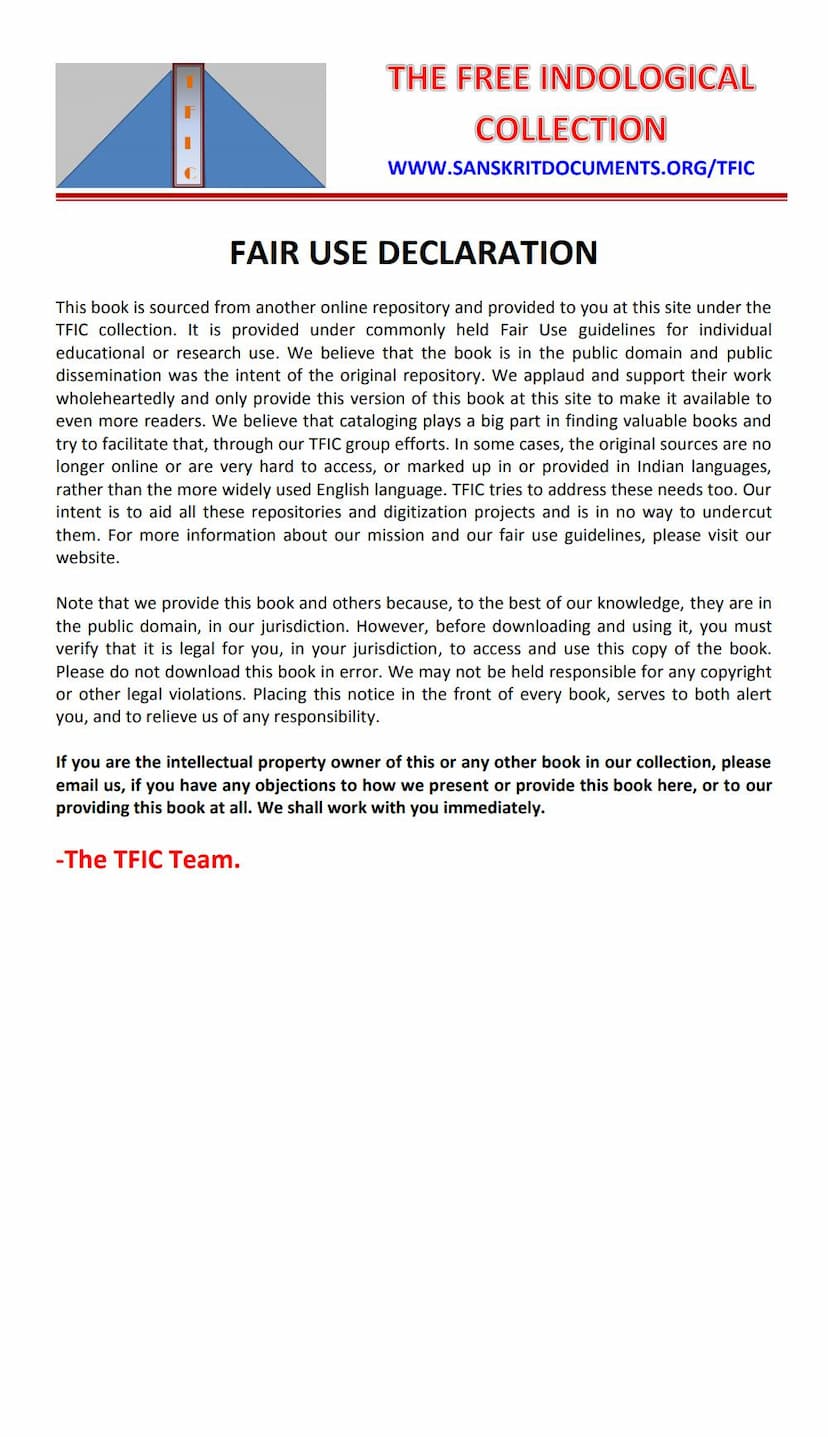Jain Siddhanta Bol Sangraha Part 04
Added to library: September 2, 2025

Summary
Here's a comprehensive summary of the Jain text, "Jain Siddhanta Bol Sangraha Part 04" by Bhairodan Sethiya, based on the provided pages:
Overall Scope and Purpose:
This volume, "Jain Siddhanta Bol Sangraha Part 04," is part of a larger series aimed at collecting and compiling fundamental tenets and concepts (known as "Bol" or "principles") of Jainism. Authored by Bhairodan Sethiya and published by Shri Agarchand Bhairodan Sethiya Jain Parmathik Sanstha, Bikaner, this volume (covering principles numbers 11 to 13, and spanning topics from 770 to 821) focuses on categorizing and explaining various Jain doctrines and practices. The series is intended for private and personal use for educational and research purposes, making complex Jain philosophy accessible.
Key Themes and Content:
The volume is structured as a collection of "Bols" or topics, each with a specific number and a detailed explanation. The content spans a wide range of Jain teachings, including:
- Names of Tirthankaras: Notably, it elaborates on the eleven names of Lord Mahavir, drawing from scriptural references to explain the significance behind each name (e.g., Vardhaman, Shraman, Mahavir, Videh, Nay, Nayaputra, Vaishali, Muni, Brahmin, Shrimati, and Antyakashyap). It also provides insights into the names of other Tirthankaras.
- Sacred Verses and Principles: It presents and explains sacred verses, such as the Manglacharan, and details various principles related to karma, vows, conduct, and spiritual development.
- Detailed Categorizations: A significant portion of the book is dedicated to detailed categorizations of concepts into twelve or thirteen parts, illustrating the Jain systematic approach to understanding reality. Examples include:
- Twelve Principles of Speech (Bhasha): Discussing various types of speech.
- Twelve Types of Conduct (Achar): Detailing the conduct expected of mendicants.
- Twelve Forms of Austerity (Tapas): Outlining different ascetic practices.
- Twelve Virtues of Arihant: Highlighting the supreme qualities of liberated beings.
- Twelve Bhavanas (Meditations): Explaining the twelve reflections for spiritual progress.
- Thirteen types of Vinaya (Respectful Conduct): Detailing various ways to show respect to spiritual guides and principles.
- Thirteen types of Kayaklesha (Bodily Austerities): Describing different forms of penance involving the body.
- Ethical Principles and Practices: The text delves into ethical guidelines for monks and lay followers, emphasizing the importance of non-violence (Ahimsa), truthfulness (Satya), non-stealing (Asteya), celibacy (Brahmacharya), and non-possession (Aparigraha). It explains the significance and practice of these vows and their subdivisions.
- Classification of Souls and Life Forms: The text likely discusses the classification of souls based on their development and the different categories of living beings (from one-sensed to five-sensed).
- Cosmology and Astronomy: There are sections discussing the structure of the universe, including the number of moons, suns, stars, and the dimensions of various celestial bodies and continents like Jambu Island.
- The Twelve Angas and Twelve Upangas: A considerable portion is dedicated to detailing the contents of the twelve Angas (primary scriptures) and twelve Upangas (secondary scriptures) of Jainism. This includes summarizing the themes and topics covered in each of these texts, such as Acharya Sutra, Sutra Krutanga, Sthana Anga, Samavaya, Bhagavati Sutra, Jnata Dharma Katha, Upasakadasa, Antakraddasa, Anuttara Upapatika, Prashna Vyakarana, Vipaka Sutra, and Drishtivada.
- Illustrative Narratives: The book utilizes numerous stories and anecdotes from Jain tradition to illustrate its principles. These narratives often highlight the consequences of actions, the path to liberation, and the importance of ethical conduct. Examples include stories of:
- King Bharata: Illustrating principles of detachment.
- Anath Muni: Demonstrating the concept of helplessness and the need for spiritual refuge.
- Arjun Mali: Showing the power of devotion and the attainment of knowledge through penance.
- Shreyans Kumar: Exemplifying the virtue of timely and appropriate charity.
- Vishnukumar: A narrative about the power of righteousness.
- Chilati Putra: A story illustrating the consequences of misunderstanding and the importance of correct understanding.
- Nami Rajarshi: Demonstrating introspection and detachment.
- Mruga Putra: Illustrating the importance of renunciation and self-control.
- Harikeshi Muni: Teaching the path of purification and detachment.
- Dhanana Sarthavaha: Highlighting the significance of virtuous actions and spiritual dedication.
- Lord Mahavir's Disciples: Narratives about the conversion and spiritual journeys of prominent disciples like Indrabhuti, Agnibhuti, and Vayubhuti, emphasizing their intellectual prowess and eventual devotion.
- Types of Devotional Practices: It might touch upon various forms of devotional practices and observances.
- Emphasis on Purity and Discipline: The text likely stresses the importance of mental, verbal, and physical purity and discipline for spiritual advancement.
Author's Contribution and Significance:
Bhairodan Sethiya, through this work, aims to present a systematic and accessible compilation of Jain Siddhanta. The effort behind this collection is significant, as it draws from various Agamic and scriptural sources to present the "Bols" in a structured manner. The publisher, Shri Sethiya Jain Parmathik Sanstha, plays a crucial role in disseminating these teachings. The inclusion of reviews from Jain Prakash and other sources highlights the perceived value and utility of the series for the Jain community. The author's dedication to this vast undertaking, often supported by his philanthropic activities, is evident.
Structure and Presentation:
The volume is organized by "Bols" (principles/topics) numbered sequentially. Each Bol is explained in detail, often referencing specific scriptures or texts. The inclusion of a "Shuddhipatra" (errata) indicates a meticulous effort towards accuracy, despite potential printing errors. The overall presentation is scholarly, aiming to provide a comprehensive understanding of the presented topics.
In essence, "Jain Siddhanta Bol Sangraha Part 04" is a valuable resource for anyone seeking to understand the depth and breadth of Jain philosophy, presented through a systematic collection of its core principles, historical narratives, and ethical guidelines.